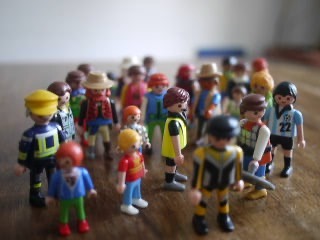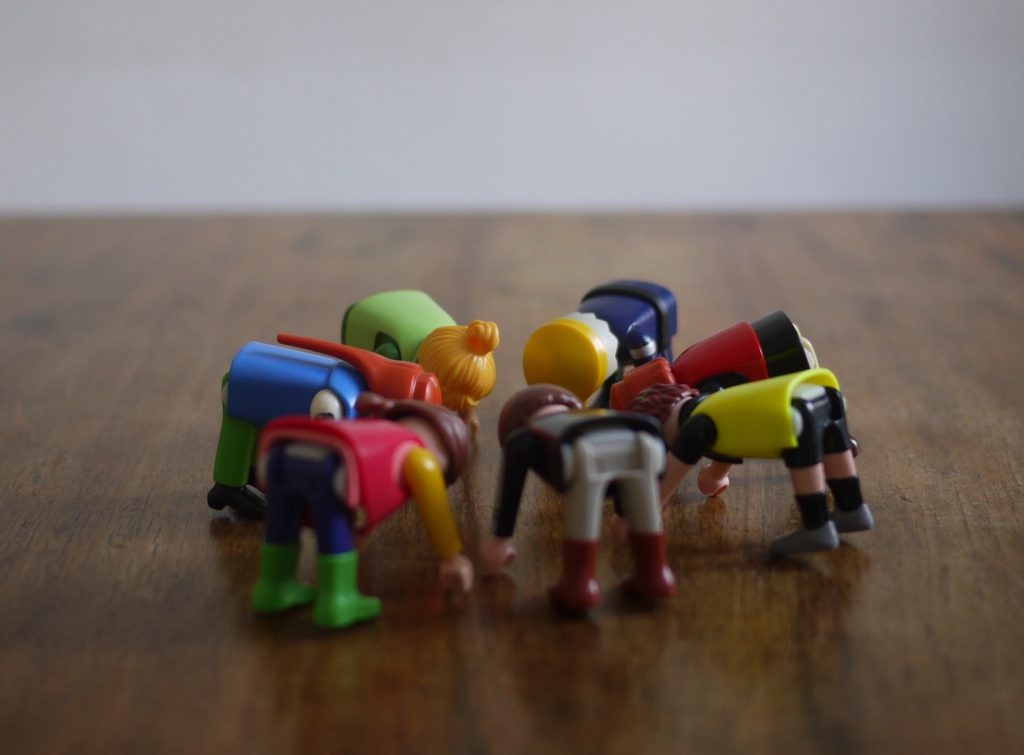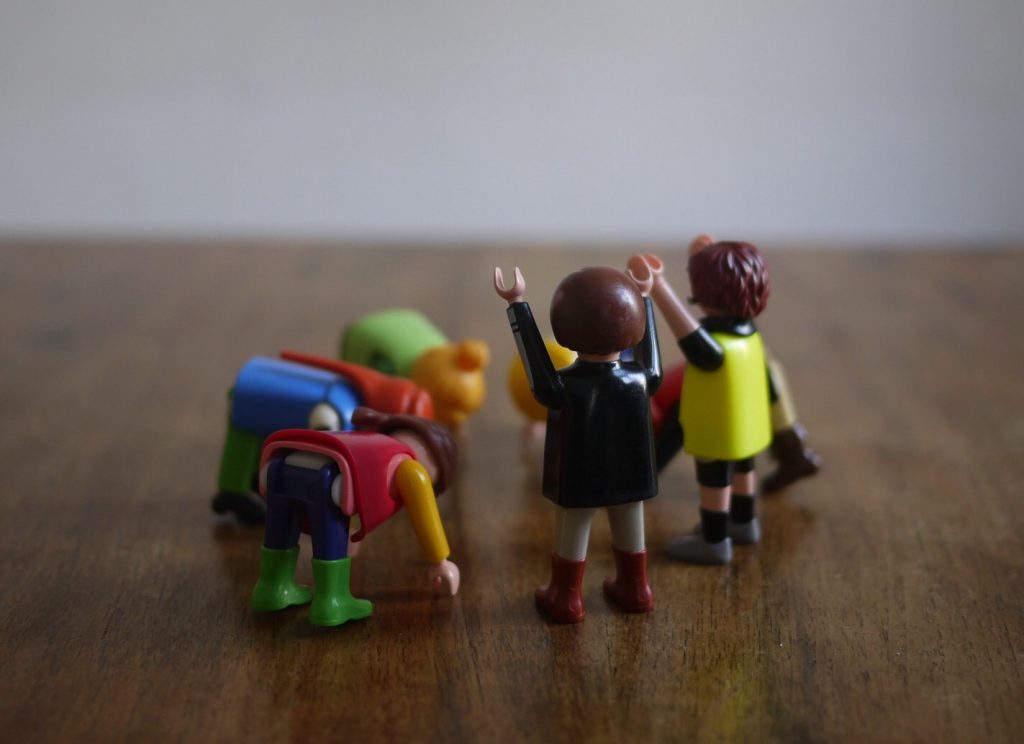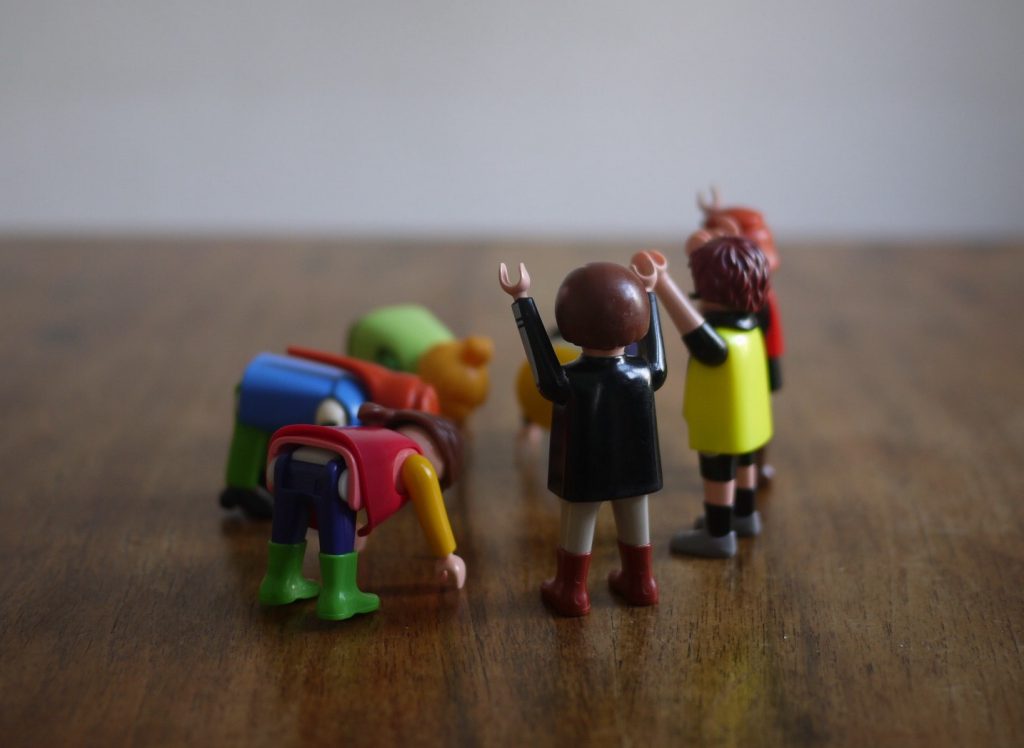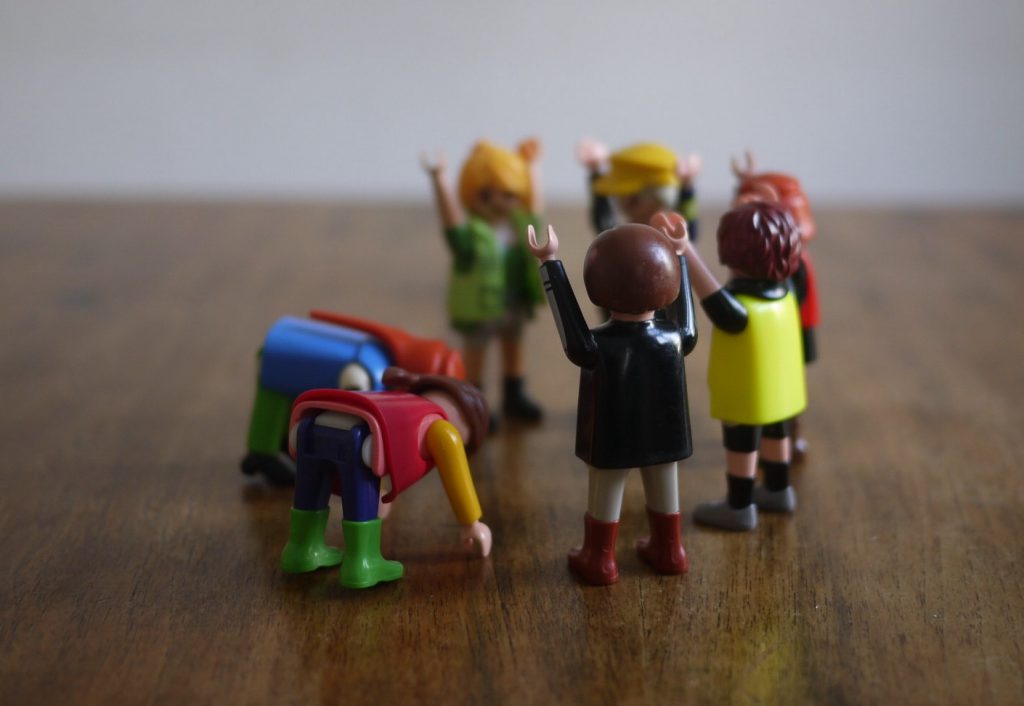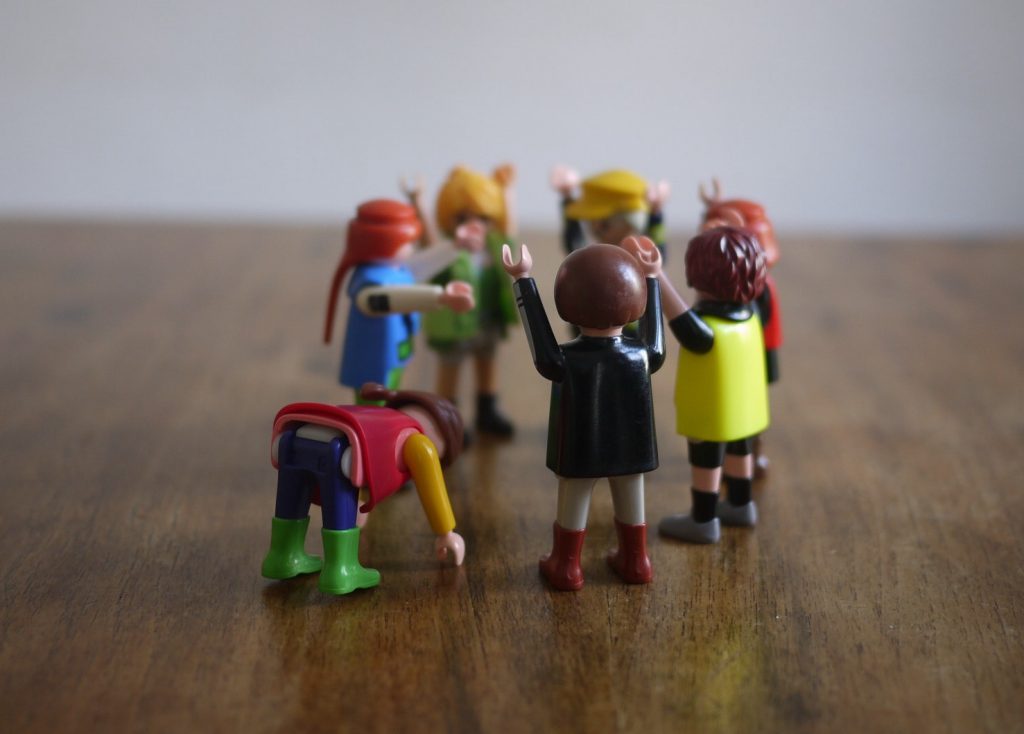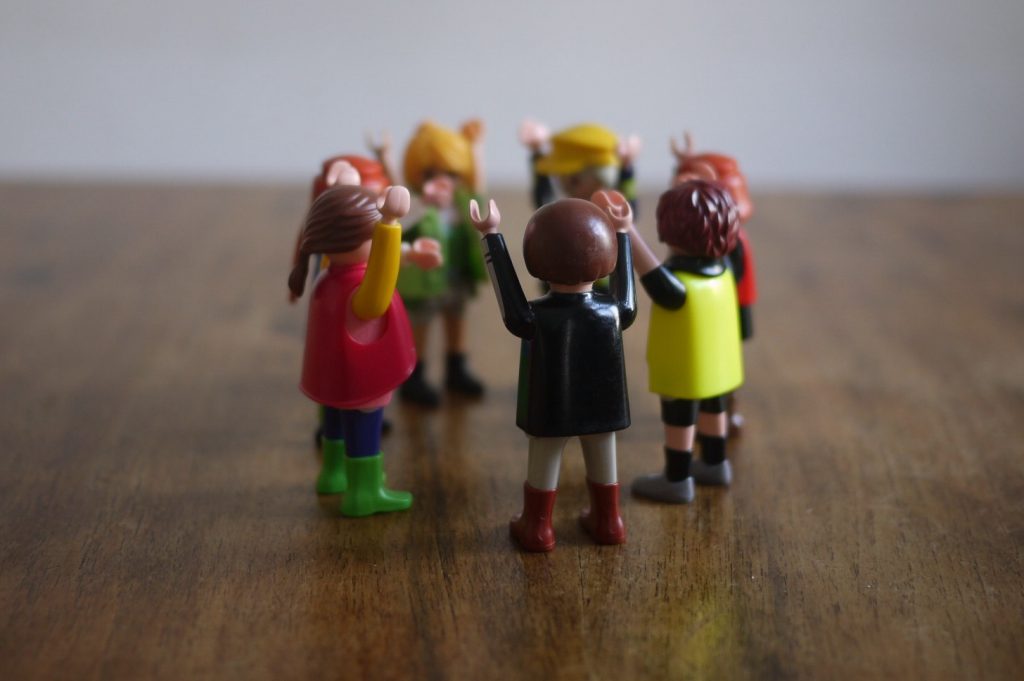… a little insight
After a few weeks of summer break, we – Irene Zavarsky and Gerda Kolb – are happy to once again provide you with bi-weekly contributions on the topic of groups and group dynamics. Of course, the five experts Beate, Paul, Yasemine, Maria and Rudi will be with us again to share their experiences and expertise.
Our fictitious but nevertheless realistic characters met during a training course on the topic of groups. For several months now, the five professionals from the fields of training, counselling and trade union adult education have been meeting regularly to reflect on and discuss various topics and aspects of groups and group dynamics. This time they focus on democracy and decision-making and what this might have to do with group dynamics.
„Crazy, the summer has never gone by so fast, but I am very happy to see you again!“ With these words Beate greets the colleagues who have already made themselves comfortable in the shade of a tree on the Donauinsel. „I’m glad to see you too,“ Yasemine replies in a good mood and immediately offers Beate a piece of watermelon that she has brought to today’s meeting. After a while of mutual updates, holiday stories and a discussion about holiday destinations in and outside of Austria, the five colleagues end up with the topic of democracy.
Group dynamics and democracy
Yasemine begins: „The group can also be understood and experienced as a microcosm of a society. Not completely, of course, but a group can be compared to an organisation, at least it is also a social entity. There, as there, there are goals to be achieved more or less together.“
The comparison of society and organisation causes irritation in the round and Rudi jumps in to add to Yasemin’s remarks: „Society is also a kind of organisation or at least also a social entity. There are rules, goals and so on, and of course it makes a difference in which way people try to achieve goals.“ „Yes exactly, for example, who is allowed to participate and who is not. In a hierarchically structured organisation or society, a few people decide. In a democracy, power comes from the people. Many people elect representatives who in turn represent their interests and participate in decision-making processes. This is not the case in a dictatorship,“ Yasemine continues. Paul now feels it is important to note that in a democracy, not everyone is allowed to have a say either, and cites himself as an example. Although he has lived and worked in Austria for many years, he is excluded from most ballots because he is a Polish citizen. Maria and Beate are indignant. They have known this, but somehow never connected Paul with the effects of these laws.
Interaction group – society
Rudi tries to steer the conversation back to the connection between group dynamics and democracy: „It is really exciting to read about the concerns of Kurt Lewin, the founder of group dynamics. He was also concerned about the possibility of having a say and not just about increasing efficiency by practising social and communication skills. While there was a focus on organisation, it was also clear to him that there are interactions between decision-making processes and participation opportunities in organisations and in society. It’s also about culture, where, for example, social cooperative processes and a constructive culture of conflict are of value.“
„Phew, that’s quite complex,“ Beate says, „I haven’t quite got the connection between dealing with group dynamics and democratic processes yet.“ Yasemine tries to add: „In a group, you can also look at how things are done to achieve goals and that allows conclusions to be drawn about democratic processes. What is needed? What works well and what is more of a hindrance? Or what are the different sensitivities and concerns? Not everyone needs the same things, for example, to be satisfied, to feel safe or to be able to work well. Especially in the training group, the core element of group dynamics, phenomena such as status, norms, authority, relationships and their effects on the dynamics of the group and the individual group members can be increasingly experienced and observed. This is precisely how various competences for dealing with each other are acquired.„
Five days in a circle of chairs
Paul: „I have never participated in a training group before. Can someone please explain how it works exactly? “ Rudi laughs, „Wow, there’s definitely something going on, I can tell you that. My last T-group – that’s actually the more common term – was also a few years ago. But I’ve found it a valuable, albeit very exhausting, experience every time. There are probably different forms, but in the T-groups I have participated in over the years, there were always about twelve people who sat in an chair circle for five days. And then of course there are trainers, usually two, if I remember correctly. Anyway, we sat there in the seminar room, the trainers introduced themselves and the schedule, i.e. when we start and stop each day, when lunch break is and things like that, and that was more or less it from them. And then what happened was highly variable.“ „And what topics did you work on?“ asks Paul.
Exploring the group
Before Rudi can answer, Yasemine intervenes: „The topic is the group itself and the individual participants. Practically, they have the task of exploring themselves and learning through that. They also have to decide for themselves how to do this. It is about perception of others and of oneself, about one’s own actions in the group, also about assumptions about others, about influence and power, about cooperation and alliances, about competition or also about attractiveness. Everything that can come up when people spend time together. In circles of friends or work contexts, these issues also come up, but people rarely take the time to work on them as intensively as in a T-group.“ Maria now also brings an experience into the discussion that she only now associates with the topic: „I know something similar from a political context: I was at a sensitivity training, where wild discussions broke out about whether a majority decision is okay or not or whether we need a consensus. It all came down to the concept of sociocracy.“
Beate asks Maria how she came up with the idea and whether she sees a connection to the topic. „Well,“ Maria says, „I think that democratic processes become very visible in decision-making. It is also often about the different possibilities that people have. For example, I have always been a great believer in consensus decision-making. I found it good and meaningful to discuss for hours, and for some topics even longer, until everyone agreed on a course of action. In this group, I realised for the first time that this can also miss the reality of someone’s life. It is a question of resources whether someone can discuss for so long. So I probably also exclude many people. That was an important realisation for me at the time and it was possible for me because I also had to deal with the needs and concerns of the other participants.“
The end is the new beginning
By now it has become quite chilly on the Donauinsel and too cold to continue sitting on the ground. Yasemine tries to summarise: „You certainly can’t treat every group like a T-group, that would be counterproductive. But reflecting on one’s own behaviour within groups in such a setting is extremely helpful and exciting for one’s own development. And also informative if you want to deal with decision-making processes in democratic contexts.“ The others can only nod in agreement. In any case, Paul and Beate now want to participate in a T-group and will report on their experiences.
On the way back to the underground, Maria speaks to Paul: „Say, you’re starting another course in September. Do you want to tell us next time how you organise the training with distance and still get a good group start? I’m still a bit at a loss.“ Paul agrees and promises to report on his experiences next time.
Authors: Gerda Kolb and Irene Zavarsky
Lust auf mehr? Zu allen Beiträgen der Serie kommst du HIER!

Dieses Werk ist lizenziert unter einer Creative Commons Namensnennung-NichtKommerziell-Weitergabe unter gleichen Bedingungen unter gleichen Bedingungen 3.0 Österreich Lizenz.
Volltext der Lizenz

